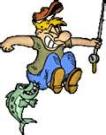
In 1609, Henry Hudson was chosen by the Dutch East India Company to lead their effort to discover a water passage to the east. Hudson sailed from Amsterdam with a largely Dutch crew aboard the Half Moon. Like the earlier efforts, the venture encountered severe weather, which prompted stirrings of mutiny among the crew. At this critical juncture, Hudson decided to violate the orders from his sponsors and headed West across the Atlantic. He investigated Chesapeake and Delaware Bays, then headed into New York Bay searching for a route to the Pacific. He headed north, , as far as Albany, on a body of water that would become the Hudson River. The Dutch established claim on the region and Hudson's voyage sparked interest in fur trading and agriculture in the area. In 2009, the 400th anniversary of his first voyage was celebrated. The recognized source of water for the Hudson is Lake Tear of the Clouds on the southwest side of New York's highest peak, Mount Marcy. From Lake Tear, the Hudson meanders 315 miles and drops 4,322 feet in elevation on its way to New York Harbor. In the 160 miles between Lake Tear of the Clouds and the The Federal Dam at Troy, N.Y., The Upper Hudson drains swiftly from the mountains over natural rapids and man-made dams. The Troy Dam marks the separation between the Upper Hudson and the Lower Hudson River. The Lower Hudson is tidal, with the fresh water coming down from the watershed (runoff) mixing with salt water pushing up from the ocean. The tide can change as much as 6 feet every six hours. The deepest point of the Hudson River is World's End near West Point which is 216 feet deep. Its widest point is at Haverstraw where it is three and one half miles wide. This estuary possesses a vast variety of wildlife throughout the year . . . the River Otter, Atlantic Sturgeon, American Eel, Bald Eagle, American Shad, Blue Crab, Cormorant, Blue Heron and of course the Striped Bass to name a few. The striped bass was adopted as the State marine or saltwater fish (State Symbol) of New York in 2006. |

| The Hudson River N.Y. |
| Striperchum.com |

Federal Dam at Troy
The Hudson is one of the primary spawning grounds for various anadromous fish species
(shad, herring, striped bass) each Spring, adding virtually millions to the marine life
population during this time of year. The many feeder creeks to the river will attract
collectors of herring for smoking and pickling. Due to the striper's power, size, and great
taste, it has become the preferred sportfish in the Hudson River for many anglers.
(shad, herring, striped bass) each Spring, adding virtually millions to the marine life
population during this time of year. The many feeder creeks to the river will attract
collectors of herring for smoking and pickling. Due to the striper's power, size, and great
taste, it has become the preferred sportfish in the Hudson River for many anglers.
| Current Hudson River Striped Bass State Record: Eric Lester caught this 60 lb. beast in Newburgh on May 14, 2014(Hudson River) He beat Ian Kiraly's old record by 4 1/2 lbs. . . the fish was over 53 inches long and had a girth of over 33 inches! It was estimated to be between 24 - 26 years old. Eric caught it on a bloodworm! |

| Bald Eagle |

In 1996, New York State set out a specific blueprint for revitalizing the Hudson River, The
Hudson River Estuary Action Plan(click sturgeon below). The proposed strategies to protect
the river’s natural resources, clean up contaminants, and promote the use and enjoyment
of the river has totally revitalized the river, which is once again teeming with life.
Singer and songwriter Pete Seeger, was a tireless environmentalist who founded the
Clearwater Sloop, anactivist group (and ship) that seeks to protect the Hudson River and
surrounding wetlands and waterways through public education on pollution in the river.
Hudson River Estuary Action Plan(click sturgeon below). The proposed strategies to protect
the river’s natural resources, clean up contaminants, and promote the use and enjoyment
of the river has totally revitalized the river, which is once again teeming with life.
Singer and songwriter Pete Seeger, was a tireless environmentalist who founded the
Clearwater Sloop, anactivist group (and ship) that seeks to protect the Hudson River and
surrounding wetlands and waterways through public education on pollution in the river.
| > ( ( (((()))) ( ' > ~ ~ ~ |


| Info Links |
Fishing License -N.Y.
New Marine Registry
Requirement (est. 2012)
Hudson River
Proposed Circle Hook
Requirement 2021
Tagged Stripers
Striper Cooperative
Angler Program
Riverkeeper
Chinese Mitten Crab Alert
Northern Snakehead Alert
Aquatic Invasive Species
Fishing Regs.(Hudson
River)
Commercial Fishing Regs.
NY Times Article: Hitching
a ride up the Hudson River
400 Years later
Save the Esopus
Lighthouse




Clearwater Sloop |


